Awesome Stuff
The Horribly Mutated Seafood in The Gulf of Mexico

BP oil spill: The horribly mutated creatures living in the Gulf. Fish, shrimp, and crabs are missing eyes and suffering strange deformities, according to a harrowing new report yet the FDA insists the seafoods safe to eat.
Shrimp born without eyes, clawless crabs, and fish with visible tumors are among the horrible mutatedmarine animals found in the waters off the Gulf Coast, according to a new report from Al Jazeera. Scientists say the problem is a side effect of the April 2010 explosion of BPs Deepwater Horizon oil rig, which killed 11 people and spilled at least 4.9 million barrels of oil into the ocean. Here, a brief guide to the damage:
The fishermen have never seen anything like this, Dr Jim Cowan told Al Jazeera. And in my 20 years working on red snapper, looking at somewhere between 20 and 30,000 fish, Ive never seen anything like this either.
Dr Cowan, with Louisiana State Universitys Department of Oceanography and Coastal Sciences started hearing about fish with sores and lesions from fishermen in November 2010.
Cowans findings replicate those of others living along vast areas of the Gulf Coast that have been impacted by BPs oil and dispersants.

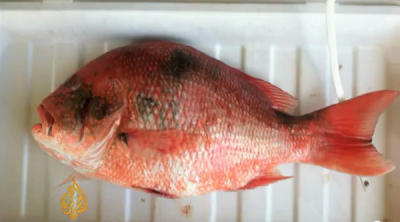
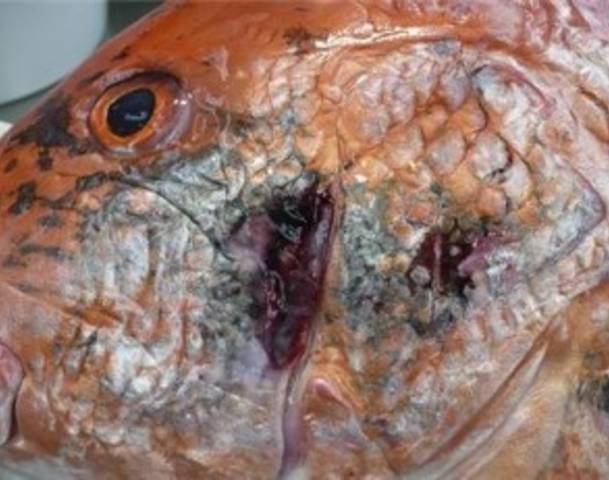
Gulf of Mexico fishermen, scientists and seafood processors have told Al Jazeera they are finding disturbing numbers of mutated shrimp, crab and fish that they believe are deformed by chemicals released during BPs 2010 oil disaster.
Along with collapsing fisheries, signs of malignant impact on the regional ecosystem are ominous: horribly mutated shrimp, fish with oozing sores, underdeveloped blue crabs lacking claws, eyeless crabs and shrimp and interviewees fingers point towards BPs oil pollution disaster as being the cause.
Eyeless shrimp
Tracy Kuhns and her husband Mike Roberts, commercial fishers from Barataria, Louisiana, are finding eyeless shrimp.
At the height of the last white shrimp season, in September, one of our friends caught 400 pounds of these, Kuhns told Al Jazeera while showing a sample of the eyeless shrimp.
According to Kuhns, at least 50 per cent of the shrimp caught in that period in Barataria Bay, a popular shrimping area that was heavily impacted by BPs oil and dispersants, were eyeless. Kuhns added: Disturbingly, not only do the shrimp lack eyes, they even lack eye sockets.
Some shrimpers are catching these out in the open Gulf [of Mexico], Tracy Kuhns added, They are also catching them in Alabama and Mississippi. We are also finding eyeless crabs, crabs with their shells soft instead of hard, full grown crabs that are one-fifth their normal size, clawless crabs, and crabs with shells that dont have their usual spikes … they look like theyve been burned off by chemicals.
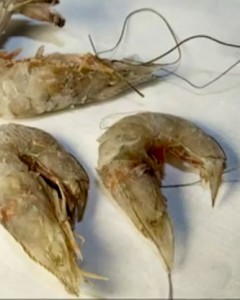
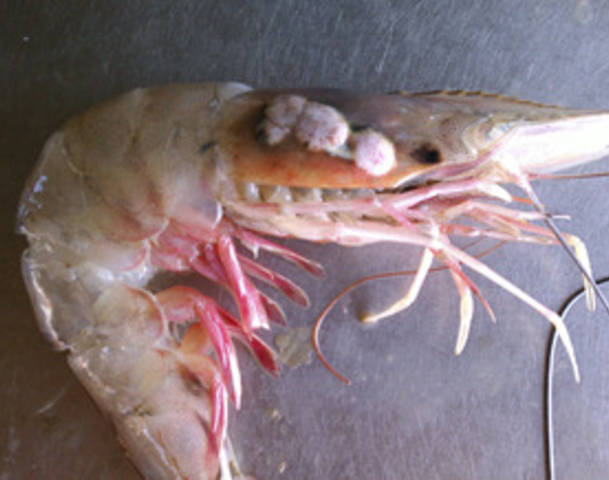
Among the disturbing mutations: Shrimp with tumors on their heads; fish that lack eyes or are missing flaps over their gills; fish with oozing sores; crabs with holes in their shells; crabs that are missing claws and spikes, or are encased in soft shells instead of hard ones.
Keath Ladner, a third generation seafood processor in Hancock County, Mississippi, is also disturbed by what he is seeing.
Ive seen the brown shrimp catch drop by two-thirds, and so far the white shrimp have been wiped out, Ladner told Al Jazeera. The shrimp are immune compromised. We are finding shrimp with tumors on their heads, and are seeing this everyday.
While on a shrimp boat in Mobile Bay with Sidney Schwartz, the fourth-generation fisherman said that he had seen shrimp with defects on their gills, and their shells missing around their gills and head.
Weve fished here all our lives and have never seen anything like this, he added.
Ladner has also seen crates of blue crabs, all of which were lacking at least one of their claws.
Darla Rooks, a lifelong fisherperson from Port Sulfur, Louisiana, told Al Jazeera she is finding crabs with holes in their shells, shells with all the points burned off so all the spikes on their shells and claws are gone, misshapen shells, and crabs that are dying from within … they are still alive, but you open them up and they smell like theyve been dead for a week.
Rooks is also finding eyeless shrimp, shrimp with abnormal growths, female shrimp with their babies still attached to them, and shrimp with oiled gills.
We also seeing eyeless fish, and fish lacking even eye-sockets, and fish with lesions, fish without covers over their gills, and others with large pink masses hanging off their eyes and gills.
Is it just the oil that caused mutations?
No. Also to blame are the nearly 2 million gallons of chemical dispersants, such as petroleum distillates and 2-butoxyethanol, used for the subsequent clean-up. The solvents used in the aftermath of the spill, long known to be mutagenic, are powerful enough to dissolve oil, grease, and rubber, says Casey Chan at Gizmodo. Thats great for sopping up oil, but terrible for the environment.The dispersants used in BPs draconian experiment contain solvents, such as petroleum distillates and 2-butoxyethanol. Solvents dissolve oil, grease, and rubber, Dr Riki Ott, a toxicologist, marine biologist and Exxon Valdez survivor told Al Jazeera. It should be no surprise that solvents are also notoriously toxic to people, something the medical community has long known.
The dispersants are known to be mutagenic, a disturbing fact that could be evidenced in the seafood deformities. Shrimp, for example, have a life-cycle short enough that two to three generations have existed since BPs disaster began, giving the chemicals time to enter the genome.
Pathways of exposure to the dispersants are inhalation, ingestion, skin, and eye contact. Health impacts can include headaches, vomiting, diarrhea, abdominal pains, chest pains, respiratory system damage, skin sensitisation, hypertension, central nervous system depression, neurotoxic effects, cardiac arrhythmia and cardiovascular damage. They are also teratogenic able to disturb the growth and development of an embryo or fetus and carcinogenic.
Cowan believes chemicals named polycyclic aromatic hydrocarbons (PAHs), released from BPs submerged oil, are likely to blame for what he is finding, due to the fact that the fish with lesions he is finding are from a wide spatial distribution that is spatially coordinated with oil from the Deepwater Horizon, both surface oil and subsurface oil. A lot of the oil that impacted Louisiana was also in subsurface plumes, and we think there is a lot of it remaining on the seafloor.

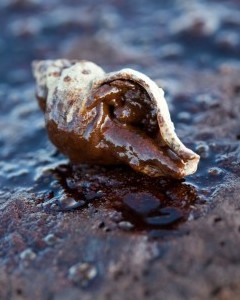
Dr Wilma Subra, a chemist and Macarthur Fellow, has conducted tests on seafood and sediment samples along the Gulf for chemicals present in BPs crude oil and toxic dispersants.
Tests have shown significant levels of oil pollution in oysters and crabs along the Louisiana coastline, Subra told Al Jazeera. We have also found high levels of hydrocarbons in the soil and vegetation.
According to the US Environmental Protection Agency, PAHs are a group of semi-volatile organic compounds that are present in crude oil that has spent time in the ocean and eventually reaches shore, and can be formed when oil is burned.
The fish are being exposed to PAHs, and I was able to find several references that list the same symptoms in fish after the Exxon Valdez spill, as well as other lab experiments, explained Cowan. There was also a paper published by some LSU scientists that PAH exposure has effects on the genome.

What does BP say?
Seafood from the Gulf of Mexico is among the most tested in the world, the energy company says in a statement. And according to the FDA and NOAA, it is as safe now as it was before the accident.
Al Jazeera contacted the office of Louisiana governor Bobby Jindal, who provided a statement that said the state continues to test its waters for oil and dispersants, and that it is testing for PAHs.
Gulf seafood has consistently tested lower than the safety thresholds established by the FDA for the levels of oil and dispersant contamination that would pose a risk to human health, the statement reads. Louisiana seafood continues to go through extensive testing to ensure that seafood is safe for human consumption. More than 3,000 composite samples of seafood, sediment and water have been tested in Louisiana since the start of the spill.
BP refused Al Jazeeras request to comment on this issue for a television interview, but provided a statement that read:
Seafood from the Gulf of Mexico is among the most tested in the world, and, according to the FDA and NOAA, it is as safe now as it was before the accident.
The FDA, EPA and NOAA (National Oceanic and Atmospheric Administration) all refused to comment on the awfulness thats happening in the Gulf. BP, the company who created this mess in the first place, refuse to take the blame, saying the seafood in the Gulf is as safe now as it was before the accident. The evidence, of course, indicates otherwise.
